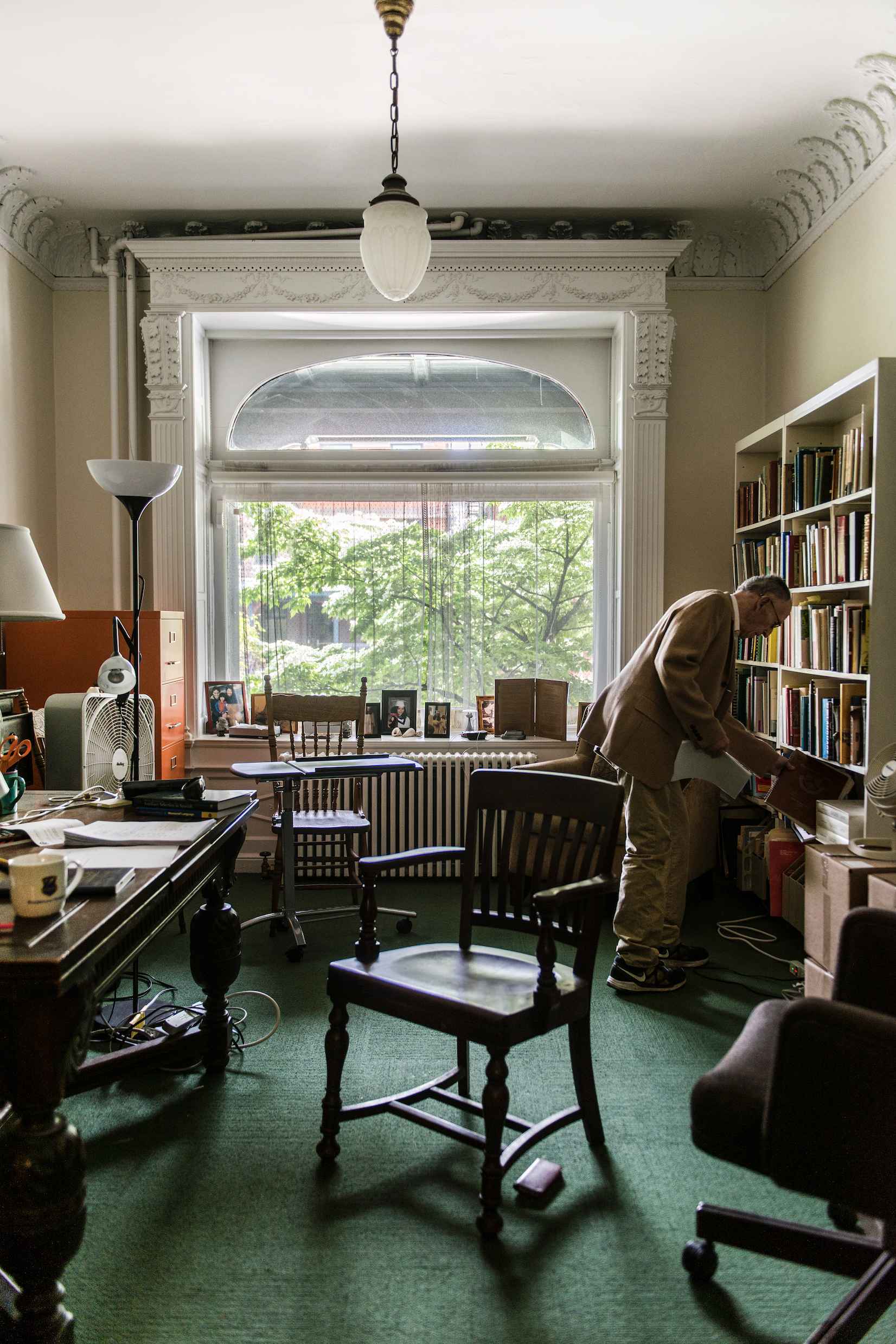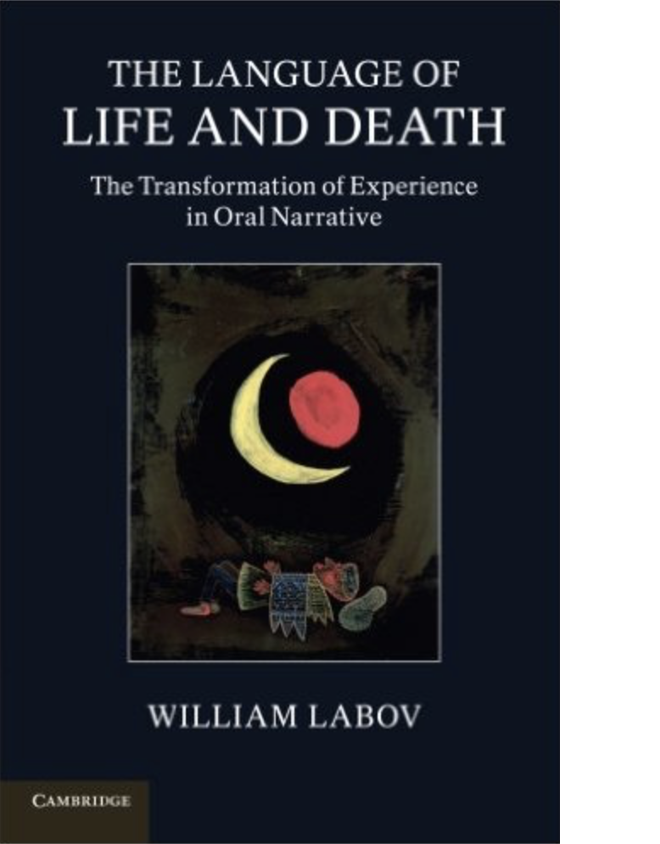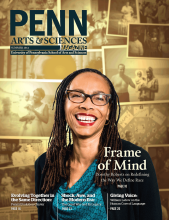During his 50-year career, Bill Labov has interviewed thousands of people to create a groundbreaking database of spoken American English. To get these men and women to tell their stories, he asks them about important things, up to and including life and death. He’s learned a lot about language and a lot about the people who use it, and the biggest is this: “Everybody has something to say.”
I asked one guy this question about the danger of death. … And he started off by saying, “I was in the Maritime Academy, and I had a rope secured around me to keep me from falling.” Very formal speech. And then, as he began to remember what it was like to be up on the masthead, he started sweating. And he said, “I was up there hanging by my fingernails. I was shakin’ like a leaf.” And to a large extent, we find as people begin to talk about reality we get two things in the narrative: The style comes closer to the unmonitored style they use in everyday life, and the view of the world that they give us is truer to what they actually think and see.
In academia, Penn’s John H. and Margaret B. Fassitt Professor of Linguistics is internationally acknowledged as the pioneer of sociolinguistics, the first to study how people actually talk and to devise ways to gather real data. He has a pile of groundbreaking books and papers, including The Social Stratification of English in New York City, Language in the Inner City, and the three-volume Principles of Linguistic Change, and he has been cited thousands of times. His most recent honor was last year’s Benjamin Franklin Medal. Among science’s highest tributes, the Franklin Institute award identifies individuals whose great innovation has benefited humanity, advanced science, launched new fields of inquiry, and deepened understanding of the universe.
His work reached a culmination of sorts in 2006 with the publication of The Atlas of North American English: Phonetics, Phonology, and Social Change, a text and audio resource that gave the first overall view of the pronunciation and vowel systems of the dialects of the U.S. and Canada. Coauthored with Sharon Ash, a research specialist at Penn Medicine’s Frontotemporal Degeneration Center, and Charles Boberg, an associate professor of linguistics at McGill University, the Atlas is based on a telephone survey of 762 people representing all urbanized areas of North America. The work redefined the regional dialects of American English and drew new boundaries reflecting those changes.
Within all the data, though, Labov has found bigger mysteries. He’s shown that despite the mass media that envelops us, differences between U.S. dialects are actually increasing. “People seem to be influenced almost entirely by those they speak with face to face,” he says. Most of the changes are imperceptible to us, but he demonstrates in his 2012 book Dialect Diversity in America: The Politics of Language Change that a rotation of short vowel pronunciations in the areas surrounding the Great Lakes—called the Northern Cities Shift—is growing more pronounced. It has reached a point where two American English speakers can’t always understand each other. For example, someone may hear a word as “bosses.” When given the context “the bosses we ride downtown,” most realize that the speaker is saying “buses,” but some misunderstand the word even in context.
Given that the point of a language should be to communicate, this inconsistency seems strange. On top of that, learning a language, despite its tremendous complexity, is an inborn skill. Every child can do it, which suggests some universal grammar common to all human languages. So why all the variation?
“That is the puzzle, as big as ever,” says Labov. “We can come up with particular causes, like the triggering effect of the Erie Canal on population movements westward. But we ask a more general question: How do we understand human nature with a language that keeps changing? My answer is that most of these changes are responding to other needs than that of communicating information.”
Labov believes the functions of communication exercised by earlier species are still part of our language system. “Establishing identity and territoriality, submission and dominance, the convergence that we see when people speak to each other, those are responding to needs and functions that have always been there. Language has to serve that purpose as well,” he says. “And that’s where we come to narrative, because in narrative we get a chance to see more deeply the underlying norms and ideologies that move people.”
When he listens, Labov hears not only how people talk but the stories they tell. He says of his most recent book, The Language of Life and Death: The Transformation of Experience in Oral Narrative, “It’s very different from the quantitative studies we have done on linguistic change. The study of narrative is part of the humanities. We can’t prove the insights we gain into the study of narrative. We can only persuade people that this is a good possibility.”
Among the narratives I heard was one told me by a Jewish postman back in 1963. It was about how two brothers engaged in a struggle after their father had died, while they were sitting Shiva: “And a rat ran out in the yard. And he started to talk about it. I told him cut it out. But kids, you know, he don’t have to listen to me. That’s when I grabbed his arm and twisted it up behind him. And there was a knife on the table. When I let go his arm, he just grabbed it and let me have it. Started bleeding like a pig. Run to the doctor. The doctor says, ‘Just that much more, and you’d have been dead.’” What triggered the conflict? Whatever the brother said was not quoted. Covering up or mitigating the conflict looks Machiavellian, but it’s really not. They’re just using their ordinary resources to let us see the world as they see it.
Labov’s career has been an effort to hear and understand ordinary men and women. He has conducted much of his research in the neighborhoods of Philadelphia and New York. He did some of his first work in Harlem, and demonstrated that African American Vernacular English (AAVE) is not incorrect English. Instead, it is a different but coherent system with its own grammar and rules, used by African Americans nationwide and untouched by the other dialect shifts around it.
Over the years he’s seen the gap between standard academic English and AAVE grow, something he attributes to increasing segregation between the black and white populations in the U.S. By the fourth or fifth grade in most schools in low-income areas, he says, “a majority of the kids cannot use reading for any useful purpose. That’s the largest social problem in the United States, as far as we can see, because it’s a bar to upward social mobility.” Using his knowledge of AAVE, Labov has developed the Reading Road, a program to teach standard academic English to African American children.
Asked about grammar, he references Steven Vincent Benet’s poem “John Brown’s Body” to explain how linguists approach language change: “When the new thing arrives, do not say it is blessed. Do not say it is cursed. Say it is here.” That’s also his attitude toward those who are speaking. “I think the most important thing about field work is that you have to accept people as they are, and you have to let them know that you’re ready to hear anything they have to say,” Labov says. “And I would say that the best thing that happened to me is that, talking to lots of people, I’ve fallen in love with the human race.”
One time I was up in Prince Edward Island. I was interviewing a man who was a widower, a ferry boat captain, just retired. And he hadn’t much to say. Every question I asked him, I think the conversation sort of fell on stony soil. And then at the end of the conversation I said to him, “Well, if there’s one thing that happened to your life that you’d never forget, what would that be?” And he said, “It was when they came to me on the boat, and they told me she was dead.” And I felt pretty bad, and I asked him a few questions about his grandchildren, and I started to get up to go. And he said, “Come here a minute. I want to show you something.” So we went into this dining room where there were portraits of people around the wall. He said, “That’s her. I just wanted you to see her.”
Everybody has something to say.







